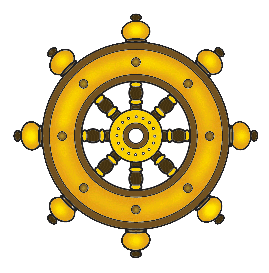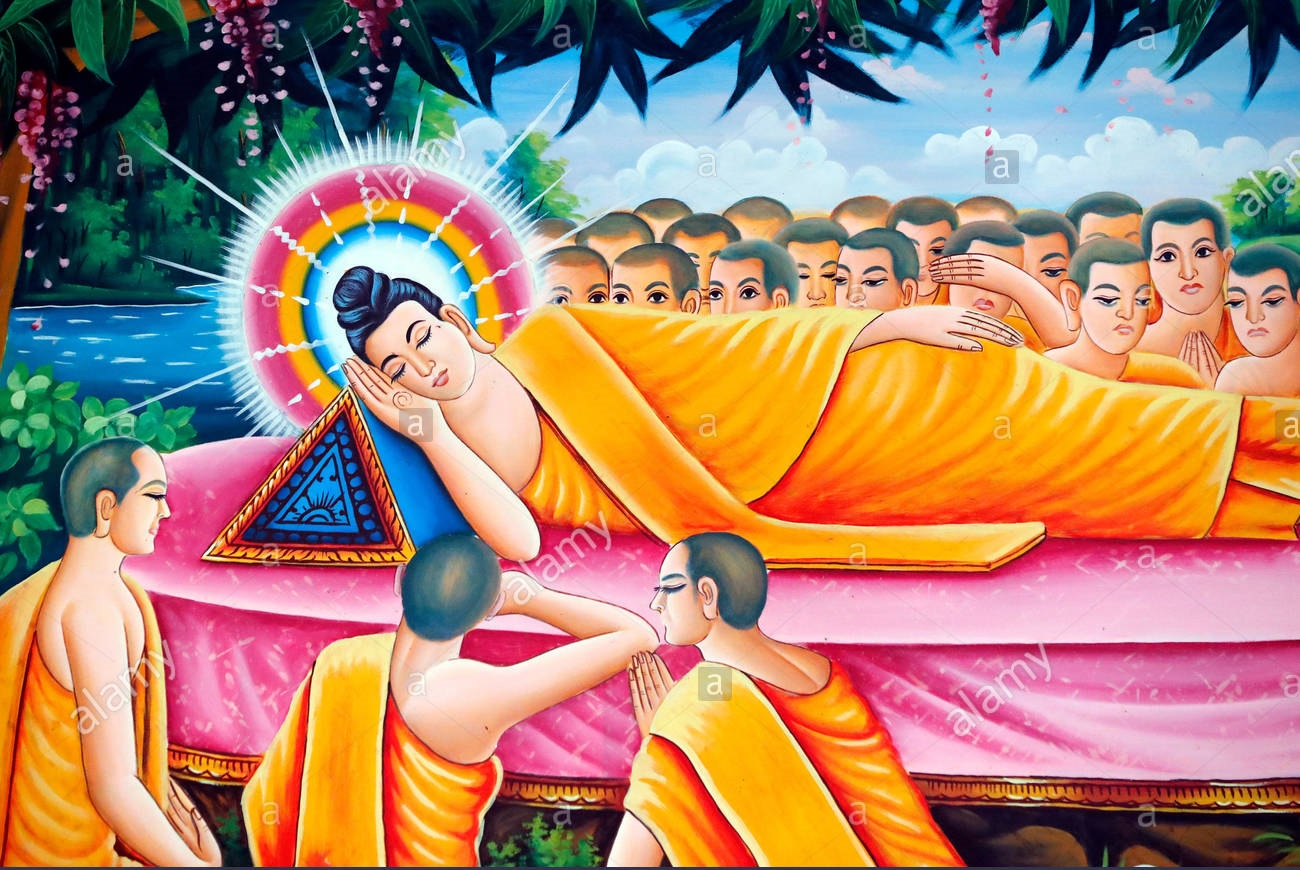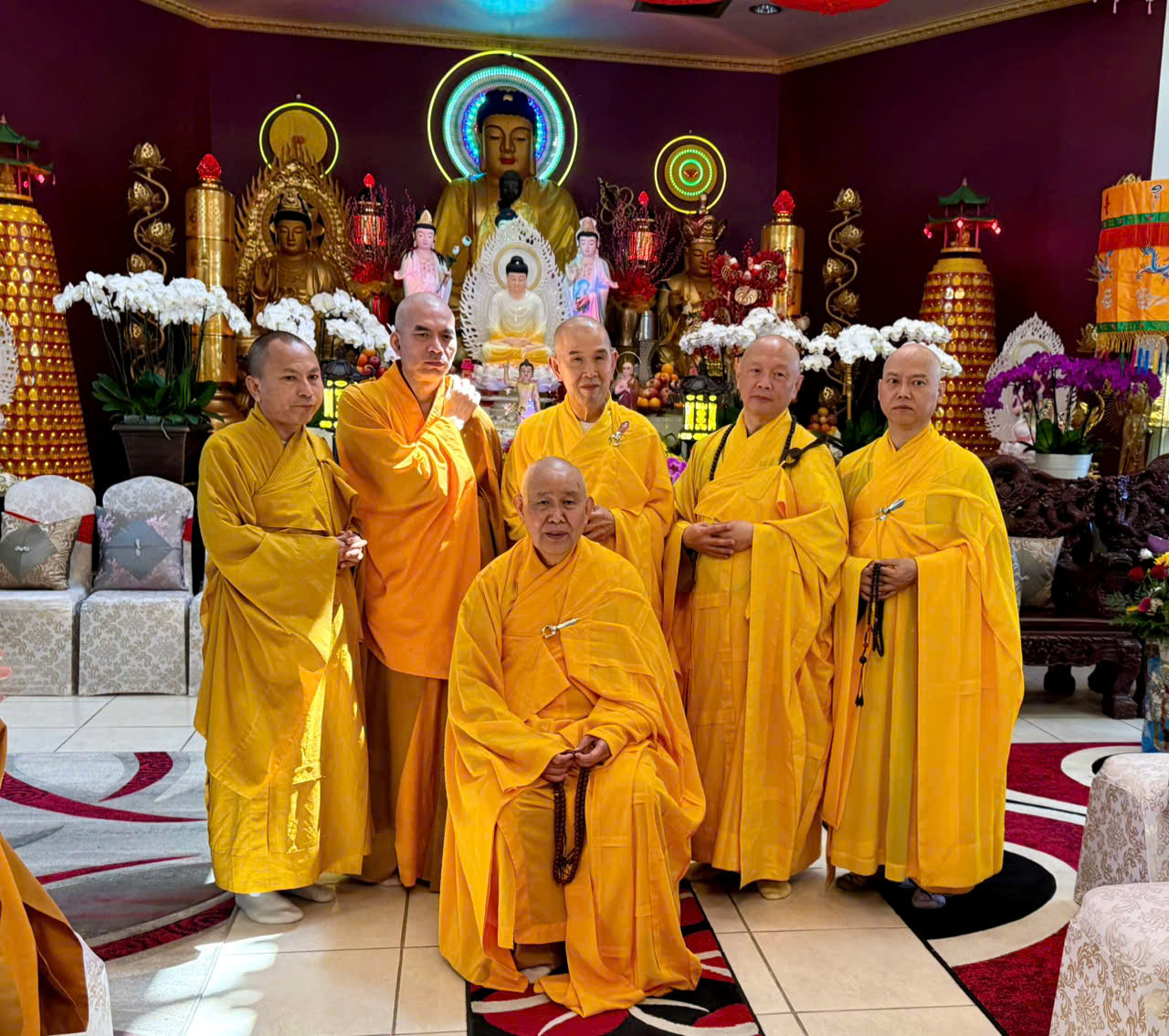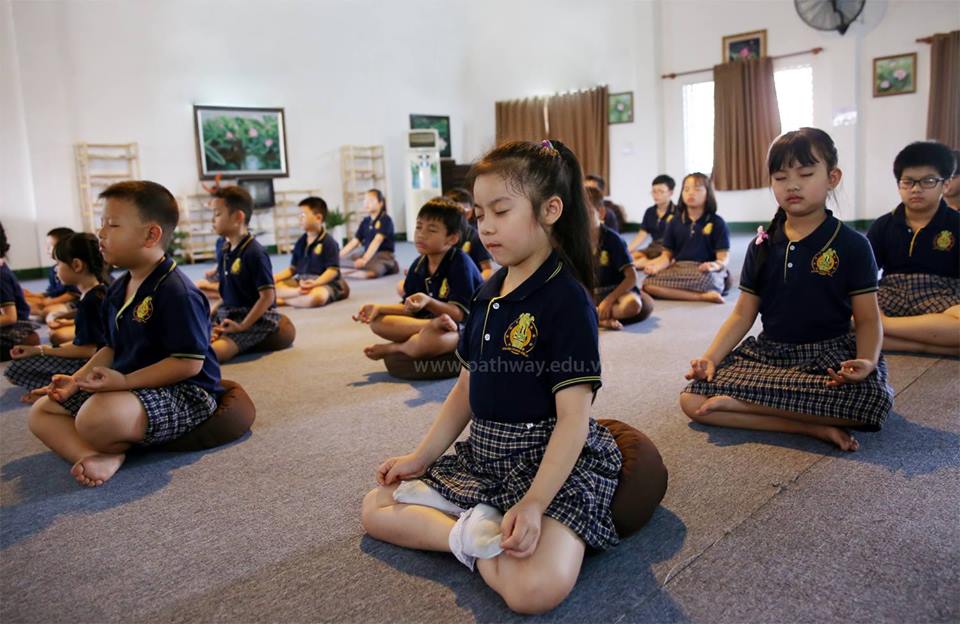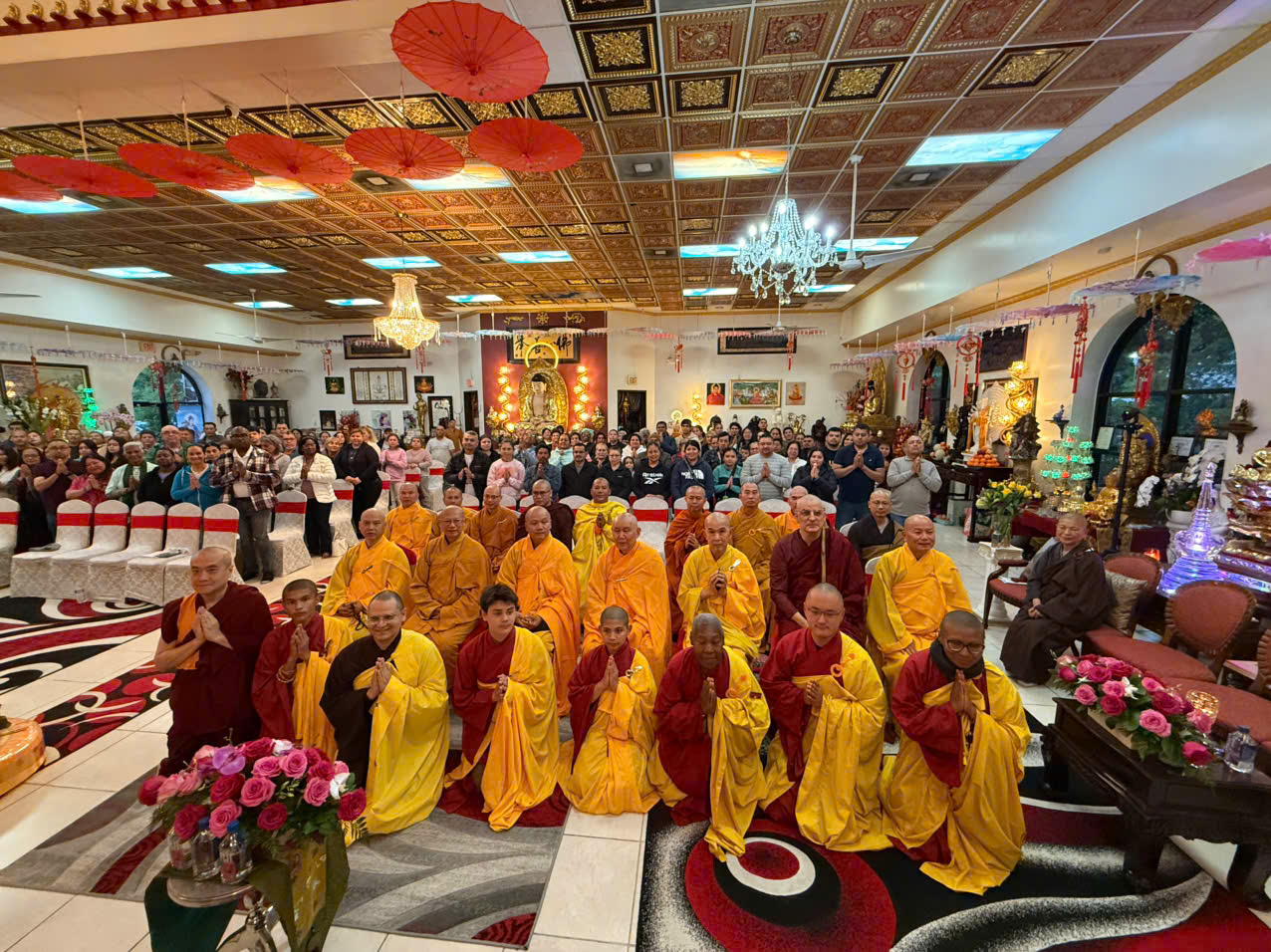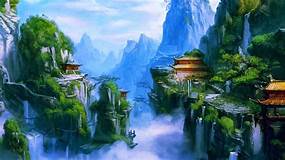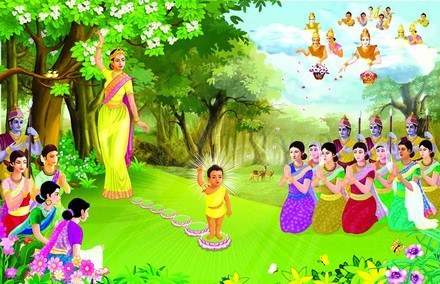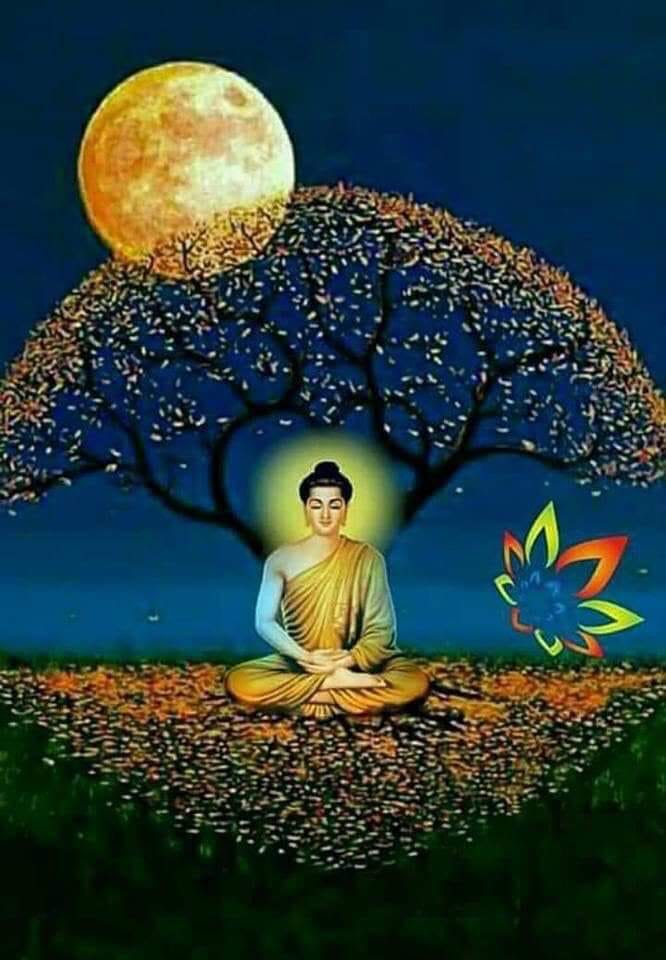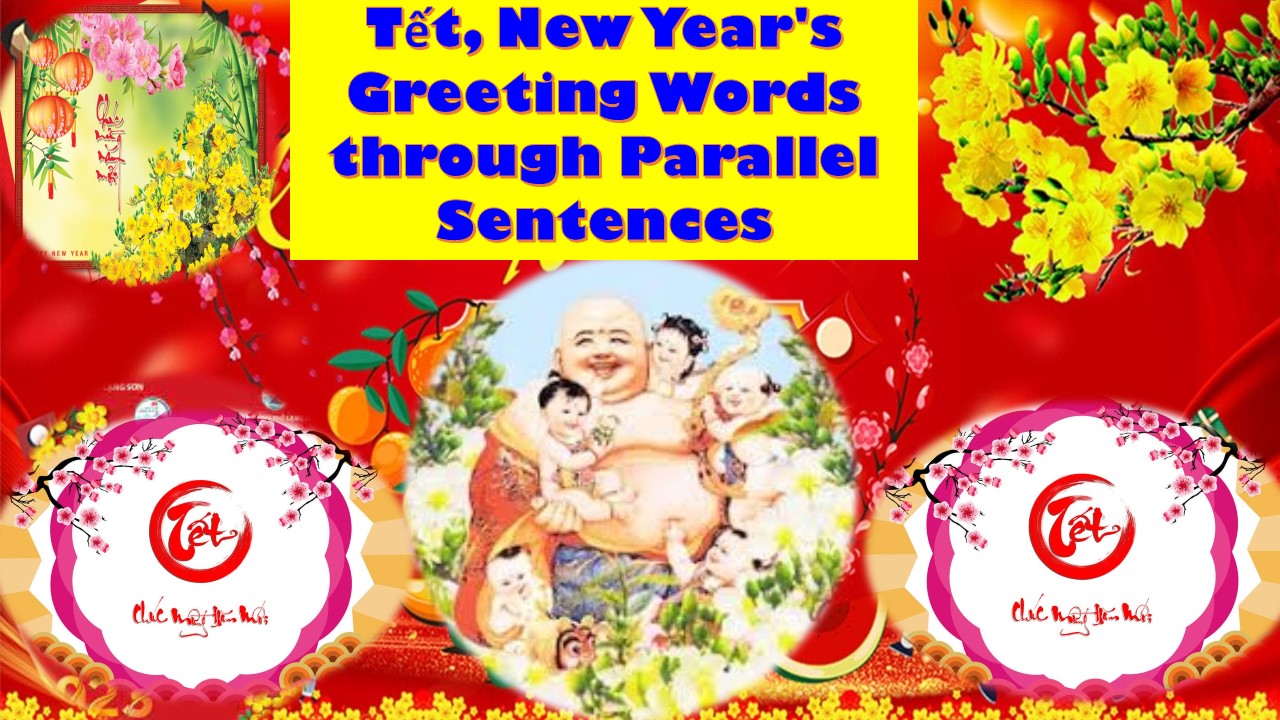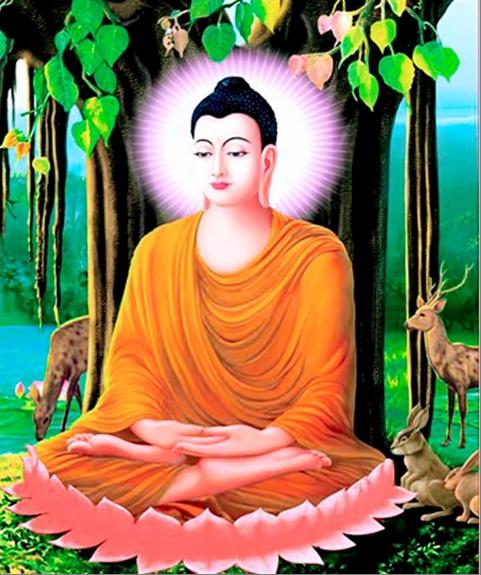
THE SPECIFIC CHARACTERISTICS OF THE SEA IN THE BUDDHADHARMA
Sakyāmuni Buddha, the perfectly awakened and enlightened Teacher, has taught the wonderful Dharma in order to bring authentic peacefulness and happiness to gods and human beings.
His teachings, which stress deeply humane features, have practical application in the present, have value beyond time, and are suitable for people of all levels of ability, cultivation, and enlightenment attainment of living beings all over this planet.
As you know, a good teacher regularly points out illuminating examples for learners, readers, listeners to easily understand and apply his teachings into their daily lives.
Likewise, in the sermons of the Buddha, in order for the congregation to easily absorb the Buddhadharma, he put forth many specific and different examples and metaphors, which were contained the specific teachings found in the Holy Tripitaka of Buddhism or in the Three Baskets of Buddhist canonical Scriptures including (Sūtra Piṭaka (“Basket of Discourses”), Vinaya Piṭaka (“Basket of Disciplines”), and Abhidharma Piṭaka (“Basket of Special [or Further] Tenets”), especially found in the Agama Sutras.
In the Ekottarikàgama Sutra, there are many specific characteristics found, but in this discussion post, “there are eight specific characteristics of the sea”[1] found in the conversation that took place between the Buddha and a Brahmin.
These eight characteristics, which are presented in the forms of metaphors, comparisons, and contrasts, are related to Buddhadharma very closely.
Afterward, we take turns to find out the meanings and contents of the above characteristics. We would like to invite you all to consult together.
- A sea beach does not have an abyss.
- The sea is immensely vast.
- The sea never contains a corpse.
- The sea is welcome to receive all the streams of water.
- The sea is neither full nor empty.
- Seawater has a purely salty taste.
- The sea nurtures aquatic species.
- The sea contains many kinds of treasures.

1. A sea beach does not have an abyss.
When swimming, we swim from shallow to deep water gradually. Similarly, when having good conditions to be in contact with the Buddhadharma, we start to cultivate and learn from lower to higher levels, to obtain enlightenment and liberation in each part, at each different level, transforming gradually from normal beings to holy beings, from suffering to peacefulness and happiness.
Moreover, the Dharma that has been well preached and presented by the Buddha and his holy disciples from the basic methods to the developing methods has practical value in the present, goes beyond time, accords with the abilities of cultivation, learning, and enlightenment of every being.
Those who have enough good conditions to contact, inquire, and practice the Buddhadharma, are never lost and drowned in it.
Conversely, they can enjoy the flowers and fruits of peacefulness and happiness right here and now in the present life.

2. The sea is immensely vast.
We know that the river is small, narrow, and limited. Conversely, the sea is immense, vast, and unlimited.
At this point, in Zen Master Thich Nhat Hanh’s Plum Village, there is a very popular meditation song with the topic
“The River and the Sea”[2]
“I have never seen the sea,
I only see the stream of the river.
But after listening to my teacher’s telling,
the sea is wider than the river;
the sea is immense,
the immensity of the blue sea is warmly salty
human life is like a river.
If anyone lives for all the people,
his or her heart is wider than the river.
If anyone lives for himself or herself,
his or her heart is narrower than the river.”
“I have never seen the Buddha
I just see his picture
But I heard the teacher tell
the Buddha is in the mind
the Buddha is in the mind,
in all people.
If anyone lives for all people
the Buddha will certainly appear.
If anyone lives for himself or herself
then the Buddha will undoubtedly hide.
The sea symbolizes the mind of freedom, immensity, and selflessness; the river represents the mind of attachment, narrowness, and selfishness.
The purpose of practitioner’s cultivation is to recognize and transform the mind of attachment, narrowness, and selfishness into the mind of selflessness, freedom, immensity, vastness, like the sea.
The above song is to remind us to try to lead a life of mindfulness and awareness, solidity, and calmness by applying the Buddhadharma in our daily lives in order to bring peacefulness and happiness to the many right here and right now in the present life.
The immense sea means that the Buddhadharma has the ability to contain all the substances of loving-kindness, compassion, joy, inclusiveness, selflessness, altruism, forgiveness, tolerance, generosity, embrace, transformation, nourishment, healing, stability, calmness, freedom, peacefulness, happiness, etc.
Those who have enough good conditions to live to apply and practice the Dharma of the Buddha have the capacity to enjoy the flavors of peacefulness, happiness, liberation, and the same equality.

3. The sea never contains a corpse.
The sea mentioned here is understood as the Dharma of the World-Honored One; the corpse is understood as misfortune, suffering, afflictions of greed, anger, delusion, wrong view, wrong thought, wrong speech, wrong action, wrong livelihood, wrong effort, wrong mindfulness, wrong concentration, violence, and hatred.
The sea is the symbol for Buddha nature, Bodhi Citta, namely, the mind of insight; the corpse is the symbol for ghost nature, the mind of defilement and suffering.
The World-Honored One’s Dharma, which is the Dharma of enlightenment and awareness, has never contained habits of negativity, afflictions, misfortune, suffering, and vice versa; all the Buddha’s teachings contain the substances of stability and calm, peacefulness and happiness, enlightenment and liberation right here and right now in the present life.
We know that those who cultivate not well regularly have a scornful mind, criticize other people, lose the mind of Bodhi, that of freedom, that of calm, and freedom.
Their lives are usually dominated and controlled by defilement and suffering; their bodies and minds are not peaceful, gentle, and relaxed.
Good cultivators, who know how to apply and practice the Buddhadharma in their daily lives, lead their lives of mindfulness and awareness, solidity and calmness, and have the ability to eliminate, overcome, and transform the negative seed into the positive one, the unwholesome seed into the wholesome one, the seed of affliction into that of Bodhi Citta, the seed of suffering into that of happiness, etc.
These good cultivators have their hearts full of joy, love, forgiveness, sympathy, help, and sharing for difficulties and suffering of themselves and other people.
Indeed, in the process of practicing the Dharma well, we can recognize that our suffering is all people’s suffering, and vice versa, our peacefulness is their happiness, and our peacefulness is their peacefulness.
When understanding and practicing so, we have the capacity to bring the flowers and fruits of authentic peacefulness and happiness to ourselves and other people right in this lifetime.
Moreover, as you know, when the corpse drifts in the sea, it will be sunk by seawater, or be washed ashore. This point implies that if we live without practicing mindfulness and awareness, we live no differently from the corpse.
If we do unwholesome things such as killing, stealing, taking what is not given, doing sexual misconduct, violating kids’ sexuality, lying, using intoxicants, etc., we will certainly be washed onto the shore of birth and death by the sea of samsara, and be dominated by afflictions and sufferings.
Aware clearly of the foregoing things, we try to lead our lives of mindfulness and awareness, to not do evil, to do good, to purify our peaceful bodies and minds by applying and practicing the Buddha’s teachings in our daily lives in order to bring the flowers and fruits of peacefulness and happiness to the many right in the present life.
We are aware to live with good conduct, aspiration, and with the hearts of love, almsgiving, charity, honesty, mindfulness, awareness, etc., all over the world.
Upon understanding and doing so, we not only help our relatives, loved ones, and ourselves to have the ability to recognize and transform suffering and afflictions, but also help other people swim to the shore of authentic peacefulness and happiness right here in this world.

4. The sea is welcome to receive all the streams of water.
We know the sea has the capacity to welcome and to receive and contain all the streams of clean water, dirty water, muddy water, rainwater, etc., flowing from hundreds and thousands of different rivers, springs, ponds, lakes, etc., all over the world.
Likewise, anciently as well as presently, the Dharma of the World-Honored One has the ability not only to embrace and integrate the doctrines and philosophical theories in the world,
including other spiritual cultures, traditions, customs, and habits in the world, but also to teach and help kings, mandarins, courtiers, servants, the rich, the poor, the white, the black, the brown, the red, people of high caste, low caste including courtesans, robbers, etc.
Those who have enough good conditions to come to Buddhism, contact and practice the Buddha’s teachings in their daily lives, peacefulness and happiness can permeate and cool their bodies and minds.

5. The sea is neither full nor empty.
As you know all the water currents of rivers, canals, ponds, lakes, etc., flow into the sea, but the characteristics of the sea are neither full nor empty, neither more nor less, neither high nor low.
Likewise, in Buddhism, there are so many kinds of different people coming from scientists, political people, spiritual leaders, religious leaders, ethicists, educators, etc.
Those who have fortunate enough conditions to cultivate, apply, and practice the Buddhadharma over a period of one week, two weeks, three weeks, one month, two months, three months, one year, two years, three years, etc.,
they have the ability to feel and enjoy the flavors of Dharma joy, Dharma happiness, enlightenment, and the same equality in the sea of the Buddhadharma.
From their practice and application of the Dharma into their daily lives, their Buddha’s natures, Buddha’s minds, Buddha’s virtues, and Buddha’s aspirations become brightened.
Thus, the sea mentions here means “Buddha nature” that is available in all of us.
Buddha, first of all, means the One who is perfectly awakened and enlightened, full of happiness and happiness, completely steady and relaxed.
Nature means “Mind.” When we feel and enjoy Dharma happiness by practicing and applying the Buddhadharma in our daily lives, our minds become brightened and our bodies become peaceful. We have the capability to overcome afflictions, transform suffering, and obtain awareness, peacefulness, stability, and calm right here and now in the present life. The “Buddha nature” in us appears illuminated.
“The sea is neither full nor empty” also means that in a holy person, whose “Buddha nature” does not increase, in a normal human whose “Buddha nature” does not decrease.
This point, which has a different meaning, is because our enlightened mind is obscured by ignorance and defilement, we cannot see our own “Buddha nature” clearly.
Likewise, “Buddha nature” symbolizes “Full Moon.” The light of the dimmed Full Moon which cannot be seen clearly is because it is obscured by clouds.
Wanting to see light is thanks to the wind. The wind blows, the clouds fly, the light of “Full Moon” naturally appears.
The “wind” here represents the cultivation and practice of the Buddhadharma. “Clouds” refer to ignorance and afflictions.
Thanks to diligently practicing the Buddhadharma, living our lives of mindfulness and awareness, we have the capacity to destroy the darkness of ignorance and extinguish afflictions.
At that time, ignorance disappears, wisdom appears, we see “Buddha nature;” the light of insight in us becomes bright. The seeds of enlightenment in us are awakened and sprouted.
“Buddha nature,” the light of insight, and the seeds of enlightenment in us, not only have the ability to offer flowers and fruits of love and understanding to the many but also “peace view, peace thought, peace speech, peace action, peace livelihood, peace effort, peace mindfulness, peace concentration[3]” to all living things and living beings on this globe.
Understanding and acting so, then we are able to become messengers of peace to truly contribute to the building of peace, happiness, and peace for many families, schools, and societies all over the planet.

6. Seawater has a purely salty taste.
Although all kinds of rainwater, river water, spring water, fresh water, muddy water, dirty water, etc. all flow to the sea, they all become seawater and have a unique salty taste.
Likewise, in all the teachings of the Buddha and His disciples, or in all the methods of Buddhist practice, whether you practice according to the Theravāda tradition or the Mahayāna tradition, whether you practice the method of meditation or the Pure Land, enlightenment and liberation are still the key factors, peacefulness and happiness for yourself and for others are the top factors. Wisdom, virtue, and meditation are the methods of essential and fundamental cultivation for practitioners right in the world.

7. The sea nurtures aquatic species.
In the space of immense vastness, the sea contains and nourishes countless aquatic species like shrimp, crab, fish, etc.
throughout the historical length of nearly three thousand years, the Buddha, the founder of Buddhism, the Dharma, and his Sangha have the ability to tolerate and cultivate many various kinds of human beings in this world, such as the wise, the unwise, the rich, the poor, the educated, the uneducated, the intelligent, the unintelligent, scholars, scientists, educators, politicians, religious leaders, including dung collector, courtesan, killer, etc.
“There is no caste division in the same red blood and the same salty tear.”
Those who have wholesome conditions to cultivate and learn the Buddhadharma diligently, lead their lives of mindfulness and awareness, steadiness and freedom, and can reap the flowers and fruits of peacefulness and happiness for themselves and for other people right in this lifetime.

8. The sea contains many kinds of treasures.
In the sea, there are countless kinds of pearls, jewels like gold, diamonds, crystals, amber, etc. Likewise, in Buddhism, there are countless kinds of beings born from eggs, fetuses, moist places, and from metamorphoses.[4]
Among the kinds of those beings, there are awakened ones, there are enlightened ones, there are holy people, there are human beings, etc.
Even though we are different peoples of the world, we have the good fortune to study the Dharma, listen to the dharma, understand the dharma, and taste the blissful dharma, Buddha nature and the light of insight in us become brightened, Bodhi Citta in us becomes fully enlightened and awakened.
From the practice and application of the Buddhadharma into everyday life to benefit other people, we are truly fresh and beautiful flowers to beautify life and help life more happiness and less suffering.
Those who understand and practice so deserve to be treasured by the world like gold, diamonds, crystals, amber, etc. right in this lifetime.
In conclusion
Through what is discussed above, we see that the specific characteristics of the sea in the Buddhadharma are typical of the specific characteristics of Buddhism, the Dharma, and the Sangha, practitioners who truly enjoy the Dharma learning, Dharma practice, Dharma joy, Dharma happiness, Dharma achievement, and Dharma enlightenment right here and right now in the present life.
These specific characteristics are only found in Buddhism, the path of awakening; apart from it, they are not easily found in other religions and philosophies.
Although these specific characteristics have been present in the world for nearly three thousand years, their values, which are very practical in the present, are timeless, suitable for science and human society today, have the capacity to extinguish afflictions and to lead practitioners to peacefulness and happiness right in the present life.
Upon understanding, applying, and practicing the specific characteristics of the sea in the Buddhadharma into our daily lives diligently and mindfully, we can bring peacefulness and happiness to ourselves and to other people right here in the world.
May you all be well, happy, and peaceful in the Dharma.
Ven. Thích Trừng Sỹ
[1] Xem Tăng Nhất A Hàm – Tám Pháp → 42. Phẩm Tám Nạn → Kinh Số 4/ Xem Tiểu Bộ → Kinh Phật Tự Thuyết ↔ Cảm Hứng Ngữ (V – Ud 51) / See Khuddhaka Nikaya I → V Udàna
http://www.buddhanet.net/budsas/uni/u-kinh-tieubo1/tb13-ptt2.htm
[2] http://langmai.org/sng-chung-an-lc/thien-ca-lc/thien-ca/303-song-va-bin.html
And http://my.opera.com/lienngoc08/blog/show.dml/4292988
[3] See the Noble Eightfold Path (Sanskrit: āryāṣṭāṅgamārga / Pāli: Ariya-Atthangika-Magga )
[4] See http://www.purifymind.com/DiamondSutraConze.htm

